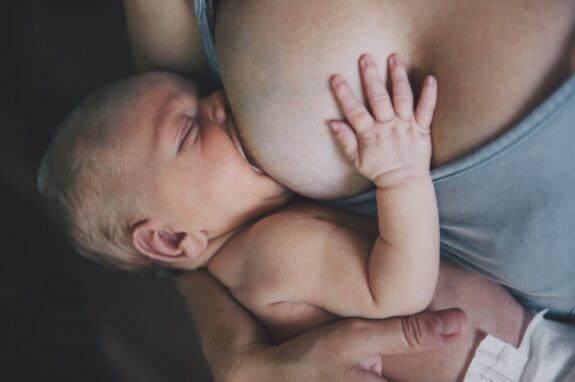Breastfeeding is a unique experience that many mothers cherish. However, it can come with some uncomfortable side effects such as clogged ducts or mastitis.
Knowing the symptoms, causes, and treatment for clogged ducts can help you manage them and enjoy your breastfeeding journey more.
Symptoms:
Clogged ducts cause soreness in your breast tissue. This discomfort often feels like an intense burning or stinging sensation in one area followed by swelling and redness. As the milk builds up in your milk ducts, you may also notice a lump on your breast that is tender to the touch. If the blockage is severe enough, you may even experience flu-like symptoms such as fever or chills. From my experience, the material in the clogged duct can appear like toothpaste.
Causes:
Clogged ducts are usually caused by milk buildup due to skipped feedings or not draining a breast completely while nursing. The hind milk has a higher fat content so it can get stuck(clogged) if not emptied.
Poor positioning when breastfeeding or wearing tight bras and clothing can also contribute to clogged ducts. Dehydration and stress can also be factors as well.
Treatment:
There are several ways to treat clogged ducts quickly and effectively. Massaging the affected area for several minutes before each feeding can help break up any blockages in the milk ducts, allowing for more efficient drainage from that breast when nursing your baby. I found that getting in the shower or warm bath helped and allowed me to hand express some of the clogged milk. Massaging the ducts while using the pump helped me as well. Just make sure you empty the breast or else you will have the same issue with the hind milk getting clogged.
Similarly, applying warm compresses before feedings will help promote milk flow from both breasts during feedings as well as relieve any discomfort associated with clogged ducts. Drinking plenty of fluids throughout the day will also keep you hydrated which helps reduce any blockages from forming in the first place.
Can You Still Breastfeed With a Clogged Duct?
Some babies won’t help clear a clogged duct because it tastes different from your normal milk and may avoid the side until it clears.
Despite this, nursing should still be possible if you properly follow the treatment steps outlined above prior to feeding time so that your baby is able to drain both breasts evenly while nursing without too much discomfort for either of you. As long as your baby is latched correctly and nothing else appears wrong with his/her health, there should be no reason why breastfeeding cannot continue while treating a clogged duct at home successfully without needing medical intervention unless otherwise specified by a healthcare professional or lactation consultant if needed/wanted/advised).
You can also pump the clogged side while you feed off the good side to keep everything moving if your baby is not feeding on both sides or if it’s too painful to have them latch.
Is It Mastitis?
Mastitis affects nearly 10% of breastfeeding women and occurs more commonly during the first three months after childbirth. It is different than a clogged duct, but just as painful; in fact, it is an inflammation of the breast tissue caused by bacteria or yeast. Symptoms of mastitis can include fever, soreness, redness, and swelling in the breast area as well as chills and fatigue. Treatment typically involves antibiotics to reduce the infection, warm compresses to reduce inflammation, and continuing breastfeeding throughout the entire treatment period even if this causes discomfort. If left untreated, mastitis can lead to a breast abscess which will require hospitalization to treat.
Can you still breastfeed with Mastitis?
While Mastitis can be an incredibly challenging and painful experience for breastfeeding mothers, it’s important to continue breastfeeding your baby. When a mother has mastitis, her milk may contain infection-fighting agents, such as antibodies, which can help protect her baby from the same infection. Furthermore, breastfeeding helps to prevent engorgement and maintains a consistent milk supply even when faced with this condition. Just like when the duct is clogged sometimes your baby won’t feed on that side because it tastes differently. Pumping while you’re feeding them on the other side will help as it will ensure you keep the milk moving through the affected breast.
To alleviate the pain, mothers can take over-the-counter pain relievers or use warm compresses on the affected area, ensuring they are comfortable during nursing sessions. It’s also important that you have a proper latch and positioning during breastfeeding.
Clogged ducts and Mastitis can be painful and frustrating but they do not have to prevent you from continuing your breastfeeding journey successfully! Being aware of the symptoms, causes and treatments available can help ensure that you’re both comfortable during feedings while addressing this issue quickly and effectively so everyone can get back to their routine.







